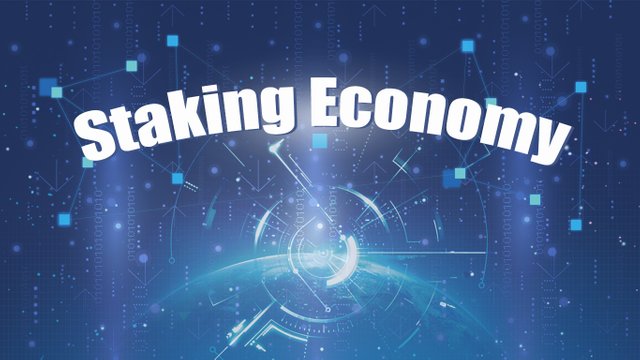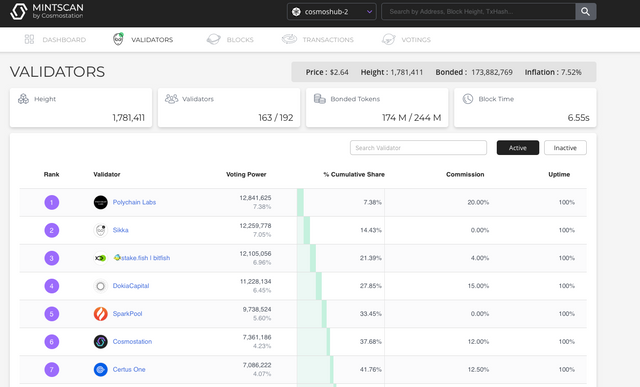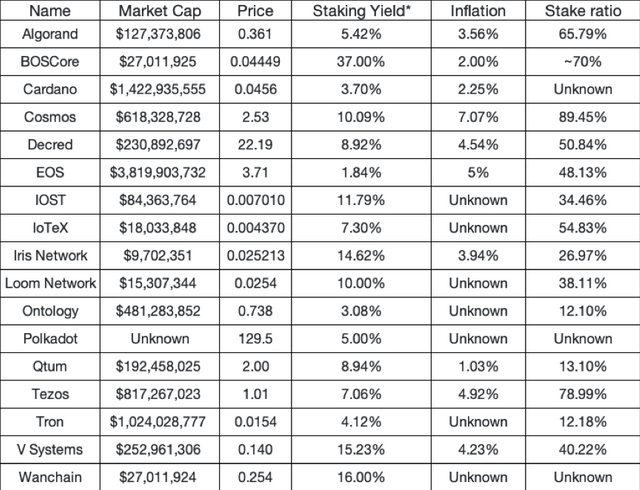Since August 2018, the staking economy has gradually appeared in our visions (Ref 1), this is because that a series of Proof-of-Stake (PoS) or Delegated Proof-of-Stake (DPoS) Mainnets such as EOS have been launched from May 2018 in succession.
This consensus system, which is different from Bitcoin's Proof-of-Work (PoW) mechanism, has opened the basic experimental field of PoS token economy with the launch of several projects main networks. It is also a new attempt in the blockchain field. A brand-new mining economy different from PoW mechanism was born. The total value of staking economy was $1.8 billion last September, and a year later it is $5 billion.

The definition of staking economy is that in the PoS/DPoS blockchain, one's tokens are staked on the nodes/validators, and one's digital assets investments are value added through obtaining the system rewards for node operation.
Theoretically, this is equivalent to the mining in PoW, but the difference is that the participation of staking economy is strongly dependent on the governance of blockchain network and the Tokenomics model.
For example, in EOS, each EOS token is entitled to 30 votes, and block producers need to obtain a certain number of votes to ensure that they can obtain node benefits. The node needs the user's vote, but the voting itself cannot directly bring benefits to the voters.
Because in the system of EOS, it is not necessary for nodes to share the benefits with voters. Of course, when the node needs the votes, nodes can also choose to share part of the rewards. The choice lies with block producers, and they could make decision according to their own needs.
In some other systems such as Cosmos and IRISnet, any user with tokens can obtain profits through staking. In their Tokenomics and governance models, validators have to share their rewards with the voters, and validators only take a commission ranging from 0 to 20%.
This means that the token holders can always get profits by staking. Voters can also choose to vote for the more stable validators charging lower commission to improve their own earnings. This model offers more opportunities for new validators to participate in the ecosystem, and this makes the system more vibrant and sustainable.

The Choice of Project
How to choose projects to increase the profitability? Different factors will have different effects on returns in different models. We analyzed the major parameters for you to choose the projects that are more suitable to invest.
Annual Yield
The annual yield is one of the most important parameters in the staking economy. It directly reflects the return of investment by tokens. In most public blockchains, the same token will be rewarded through staking. Therefore, the yield becomes the most important factor in terms of comparison.
Of course, current rates of return are not indicative of future yields, because a staking economy is dynamic and there are many other factors that affect rates of return and it can change in real time. Any change in parameters will affect users' profits. Now, let's look at some of the other important elements.Staking Ratio
Staking ratio is the ratio between number of staking tokens to the total supply of tokens, represents the community active support in the project. The staking ratio is generally low when main network has just launched, which means that the number of people who get reward is little and the return of staking will be high. Along with the advance of the project and more community members to participate in the staking, the rate of return will gradually reduce.
Of course, if you see a project that can still get high yield with a high staking ratio, it means that the potential return of this project is not likely to decline a lot.Transaction Number/ Transaction Volume
Some PoS networks will distribute transaction fees or part of the transaction fees as reward to nodes, which the transaction numbers or transaction volume will directly affect the profit. Projects such as Terra also adjust percentage of transaction fees charge. When the yield of nodes decreases, higher transaction fee charges will ensure sustainable yields so that there are sufficient number of nodes to maintain the stability of the network.
At the same time, it also means that the project needs to attract more DApps and developers to the network, bringing in enough end users and provide adequate ecological support to ensure ecosystem growth. In this way, the project could bring better rewards to the investors who stake tokens on nodes.
If a project is using transaction fee as reward, the ecological development will have a strong impact on the earnings. If the business development of the project is not as good as expected, the yield will decline inevitably. When selecting projects, we should try to avoid projects which the number of transactions and ecological growth have high impact on the return rate.Inflation Rate
Just as monetary inflation, tokens also have inflation. First, token inflation is a response to the expansion of the token economy. Part of or all of the node rewards come from inflation in the PoS system.
On the other hand, inflation may also mean a decline in token's value. This is also the reason why the annual yield of some projects is very high, but they are not recognized by community. For example, Livepeer, the current annualized rate of return is 130%, but the inflation rate is also as high as 70%. Our advice is that with the same yield, try to choose project with low inflation rate.Token Price
When the actual growth rate of the economy is lower than the rate of inflation, the price of token will face selling pressure along with the issuing of other tokens. In the secondary market, the most direct impact is the decline in token price.
The price of token and the future potential of the project also directly affects whether more funds are willing to buy tokens in the secondary market for obtaining profits by staking.
After all, a high-quality and cheap asset will be known by all. Under the rising trend of token price, obtaining more returns through staking must be the first choice of many value investors.
The Way to Participate in Staking
According to different governance systems, there are two main ways to participate in staking economy:
Building-Your-Own Node
Building-Your-Own Node is applicable to all PoS/DPoS blockchain networks, and in this way you can participate in some systems that ordinary token holders cannot gain benefits, such as EOS.
However, the entry barrier of this mode is relatively high, which is only suitable for two kinds of teams: First, technical team, which has rich underlying technical experience and is very familiar with setting up node servers. They have good reputation to attract enough users to stake. The second is the team with huge capital, which they can obtain sufficient tokens at a very low cost to stake for return.Choose Suitable Staking Service Provider
For most common users, it is more important to choose the right staking service provider. Users can select the projects they are keen to invest according to their preferences. They can also choose a reliable service provider according to their tokens on hand.
After confirming the project, users can observe the performance and reward-split ratio of different nodes/validators according to the information on block explorers to determine their service provider. Of course, users can also directly select a reliable service provider from staking information platforms, such as Stakingrewards.
For the convenience of the readers, we have summarised the information from some well-known projects for your reference.

Reference: